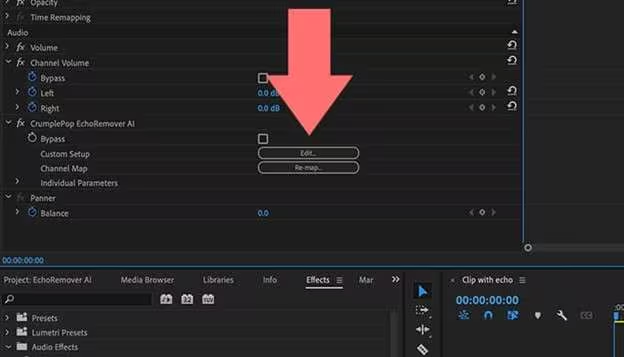Echo and reverberation can often ruin an otherwise perfect audio recording. Whether it’s a podcast, a music production, or a video project, unwanted echo can distort clarity and reduce the overall quality of your audio. Fortunately, with advancements in technology, echo remover tools have become more accessible and effective. This comprehensive guide explores the top echo remover tools available today, their features, benefits, and how audio professionals can make the most of them.
Why Echo Removal Is Essential in Audio Production
Echo is a reflection of sound that arrives at the listener with a delay after the direct sound. In controlled environments like studios, acoustic treatment helps minimize echo. However, in field recordings or home setups, echo becomes a common issue. Removing echo enhances intelligibility, ensures cleaner dialogue, and improves the listener’s experience. For musicians, producers, podcasters, and content creators, using a reliable echo remover is often a non-negotiable part of the audio editing workflow.
Key Features to Look for in an Echo Remover
When choosing an echo remover tool, audio professionals should consider the following features:
- Real-Time Processing: Ideal for live performances or broadcasts.
- AI or Machine Learning Integration: Enables smarter detection and separation of echo from the original audio.
- Multi-Band Control: Allows selective echo removal without affecting desired frequencies.
- Compatibility with DAWs: Supports integration with digital audio workstations like Pro Tools, Logic Pro, FL Studio, etc.
- Non-Destructive Editing: Ensures the original audio can be preserved and edited safely.
Top Echo Remover Tools for Audio Professionals
iZotope RX
iZotope RX is considered a gold standard in the world of audio restoration. Its De-Reverb module is powerful and intelligently reduces echo and room tone. The interface is user-friendly, with visual spectrograms that help target echo specifically without damaging the rest of the audio. RX 10 introduces improved AI-driven algorithms for better accuracy and minimal artifacts.
Pros:
- Industry-leading noise reduction and echo remover
- Standalone software or plugin
- Excellent visual feedback
- Presets for various environments
Cons:
- Premium pricing
- Requires a learning curve for beginners
Adobe Audition
Adobe Audition’s Adaptive Noise Reduction and Reverb Reduction features are excellent for cleaning up audio recordings. It provides a visual waveform editor and supports spectral editing. Audio professionals can use the ‘DeReverb’ effect to reduce unwanted room sound efficiently.
Pros:
- Seamless integration with Adobe Creative Cloud
- Real-time preview
- Batch processing capabilities
- Regular updates and support
Cons:
- Subscription-based model
- Less precise than dedicated tools like iZotope RX
Acon Digital DeVerberate
Acon Digital DeVerberate is a specialized echo remover plugin focused entirely on reducing reverb and echo. It separates the direct sound from the reverberant part and allows for dynamic control over both. Version 3 introduced an AI-based algorithm that adapts to the recording environment.
Pros:
- Simple interface tailored for echo removal
- AI-assisted processing
- Affordable one-time purchase
- Available for macOS and Windows
Cons:
- Limited broader audio editing tools
- Less support for real-time processing
Waves Clarity Vx DeReverb
Part of Waves’ popular Clarity Vx plugin series, this tool uses neural networks to reduce room echo and background ambience. Designed for voice recordings, it’s a favorite among podcasters and vocal editors.
Pros:
- Extremely easy to use
- One-dial control
- Low CPU usage
- Great for podcast and voiceover work
Cons:
- Limited customizability
- Less effective on music with complex echo patterns
Zynaptiq UNVEIL
Zynaptiq UNVEIL is an advanced echo remover that uses cutting-edge source separation technology. It’s designed for music, film post-production, and forensic audio, allowing professionals to bring clarity to even the most reverb-heavy recordings.
Pros:
- Unique perception modeling
- Handles both room reverb and creative reverb effects
- Excellent for complex audio scenes
- Real-time processing support
Cons:
- High price point
- Interface may be overwhelming for new users
Comparing the Tools: Which One Is Right for You?
For podcasters and voiceover artists working with relatively clean voice recordings, Waves Clarity Vx DeReverb or Acon Digital DeVerberate are ideal choices. Their simplicity and effectiveness make them perfect for spoken-word content.
For audio engineers working on music or film, iZotope RX and Zynaptiq UNVEIL provide deeper control and superior quality. These tools are especially useful when dealing with complex, layered sounds that require precision echo removal.
For those already in the Adobe ecosystem, Adobe Audition offers a great balance of functionality and ease-of-use. It’s perfect for multimedia professionals who want an all-in-one suite.
Tips for Getting the Best Results with Echo Remover Tools
- Use High-Quality Source Recordings: The cleaner the input, the better the output. Echo removal works best when the direct sound is clear.
- Tweak Gradually: Start with small adjustments and preview often. Over-processing can result in artifacts or make audio sound unnatural.
- Use Spectral Editing Where Possible: Tools like iZotope RX allow you to visually isolate and treat problem areas.
- Combine with Other Techniques: Use noise gates, equalization, and transient shaping to complement the echo remover.
- Always Work on a Copy: Keep an untouched version of the original recording to avoid irreversible changes.
The Role of AI in Modern Echo Removers
AI has transformed the capabilities of echo remover tools. Instead of relying on static parameters, modern tools analyze the context and dynamically adjust how much echo to remove. This results in more natural-sounding audio and less risk of damaging the clarity of the original signal. AI-powered tools like iZotope RX, DeVerberate 3, and Clarity Vx showcase how neural networks can improve audio restoration by recognizing patterns and learning from large datasets.
Future Trends in Echo Removal Technology
As artificial intelligence continues to evolve, future echo remover tools are likely to offer:
- Better Contextual Awareness: Automatically detect the environment type (hall, room, studio) and adapt settings.
- Multitrack Echo Reduction: Simultaneous echo processing across multiple channels without phase issues.
- Cloud-Based Processing: Faster, high-performance echo removal using cloud servers.
- Integration with Streaming Platforms: Real-time echo reduction for live streaming and broadcasting.
These advancements will further streamline the audio editing process, making high-quality sound accessible even to creators without technical backgrounds.
Conclusion
The ability to remove unwanted echo is essential for producing clean, professional-grade audio. Whether you’re a music producer, podcaster, filmmaker, or content creator, the right echo remover can drastically improve the quality of your recordings. Tools like iZotope RX, Adobe Audition, DeVerberate, Waves Clarity Vx, and Zynaptiq UNVEIL each bring unique strengths to the table. By understanding their capabilities and limitations, audio professionals can select the ideal tool to match their specific workflow and production goals.
Ask ChatGPT


